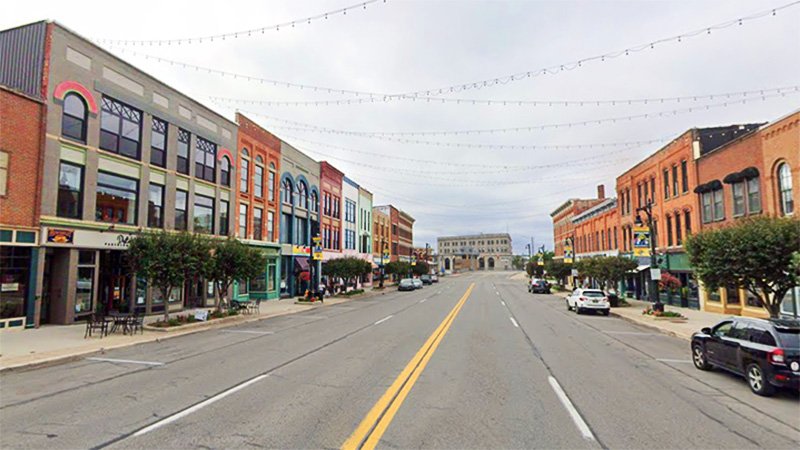This Maine Town Is Known for Retail. Now It Wants Residents.
L.L. Bean in Freeport, ME. (Source: Flickr/Jess Gambacurta.)
Freeport, Maine, has had to reinvent itself more than once. In the era of sailing ships, it was a major shipbuilding center. Then, in the early 20th century, it was a thriving hub for shoe factories, with a population that lived and worked in its downtown core.
After the migration of American manufacturing to countries with cheaper labor in the 1970s and 80s, it found a new niche. The popularity of iconic Maine retailer L.L. Bean drew a substantial number of shoppers to the town, and retailers took advantage of all the foot traffic. Fueled by the surge in outlet shopping across North America, Freeport became a discount shopping mecca, adding stores throughout its classic New England downtown.
Then came the double blow of the retail apocalypse (with online shopping sapping profits from brick-and-mortar stores) and the COVID pandemic. With vacancy rates creeping up, town officials and engaged citizens once again faced the question: “What do we want downtown Freeport to be?”
To answer that, Brett Richardson, executive director of the Freeport Economic Development Corp., looks to the city’s past. “Freeport was really a manufacturing town that allowed folks to live downtown and in mixed-use neighborhoods, dense residential neighborhoods, and then be able to walk to their jobs.” Even as cars gained in popularity, “the old timers talked about the fact that they only drove their cars on the weekends, because they could get everything they needed right downtown.”
Town Council Chairperson Dan Piltch emphasizes that drawing residents back downtown is a primary goal: “We need more affordable housing. We also need market-rate housing, we also need housing in the missing middle. … So how do we stimulate that development?”
Piltch adds that adding residents to the current retail-heavy downtown will also bring ancillary benefits. “The housing will beget local and regional businesses, which will supplement the destination of the experiential businesses,” says Piltch. He estimates downtown Freeport currently has around 300 residents (the overall population is almost 9,000) and that the town has estimated it will take around 1,500 living within a walkable core to spur the secondary development Freeport is seeking.
Both officials say Freeport has many attributes in its favor to enable this transition. It has a train station on the route of Amtrak’s regional Downeaster service from Boston. It has bus service on the Metro BREEZ network serving the greater Portland area. And it has a thriving tourist economy—the flagship L.L. Bean store is among the most-visited attractions in Maine—that brings millions of visitors a year to Freeport.
This town started a multi-year process called Downtown Vision to engage local residents and help define the terms of its transition. It held a series of town meetings and charrettes to let citizens make their wishes known. There was broad acceptance of measures to enhance housing options and enable more locally owned businesses in downtown Freeport.
As with many such redevelopment efforts, parking reform is front and center. To accommodate its daily influx of tourists, Freeport has embraced what it calls a “park once” strategy, with many visitors parking in lots owned by or affiliated with local businesses. Businesses can reduce their required quotas by using shared lots with no branding or primary rights. Freeport has already lowered those quotas, as well as parking requirements for multifamily developments. The town has rezoned some surface parking to allow residential construction, with one project currently underway and two more on the horizon. Both leaders say the need to reconcile visitor parking with greater infill development requires a balancing act, and Richardson points to “adaptation strategies that the town could look at to maintain supply,” such as garages or pedestal construction, as it converts surface lots.
Among the zoning reforms already accomplished, Freeport added mixed-use development as a permanent option downtown, increased building heights in its downtown zones, and changed the minimum land area per dwelling unit to zero, a change that encourages compact infill. Here too, parking reform is intertwined, as the town seeks solutions for multifamily developments that don’t result in “a vast sea of parking around your building,” says Piltch. He notes that there’s plenty of parking overall that’s not used to capacity on most days, and hopes more developers can work with existing options. Richardson says the town is also looking at creating a transit-oriented development corridor surrounding its transportation facilities to enable future grants and development.
In August, the town council passed the Fit Up program, which will “provide matching funds for local businesses to improve Downtown commercial spaces to enhance business vitality, diversify Freeport’s offerings [and] activate underutilized spaces.” The town hopes property owners will take advantage of up to $60,000 in grants to enhance the local food scene, create spaces for makers and retail, and other uses.
In terms of what long-term success would look like for Freeport, Piltch points to the next generation: “What I'm hearing is … my kids can't afford to stay here. Or my kids can't afford to come back. You know, they've gone to college, they got a job and now they want to come back home. There's nothing for them to buy.” Like so many communities facing a similar challenge, Freeport’s leaders hope today’s actions will bring future generations back.





Ilana Preuss is the founder and CEO of Recast City, a program that helps cities build strong downtowns by empowering small-scale manufacturers. Today, she joins host Tiffany Owens Reed to discuss the importance of small-scale manufacturing and her experiences as a city builder.